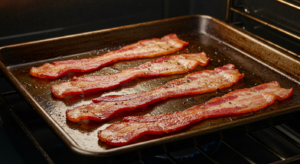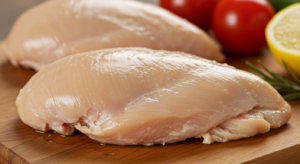
How long to smoke pork shoulder at 225: A Comprehensive Guide
Deciphering the puzzle of “how long to smoke pork shoulder at 225” is not as straightforward as it seems. The answer to this question largely depends on the size of the smoking cut and several other factors. Let’s delve deeper.
The task of smoking a pork shoulder may seem daunting for beginners. However, it’s essential to understand that the process is not complex. Keep in mind that the procedure will take a considerable amount of time and patience.
Understanding the Boston Butt Cut of Meat
The term ‘Boston Butt’ refers to a particular cut of meat from the pork shoulder. This portion is often used for smoking because it contains hefty connective tissues, which can impact the cook time.
A well-cooked Boston butt cut should be moist, tender, and flavorful. However, if overcooked, this cut can become exceedingly dry and tough. Therefore, it’s critical to monitor the internal temperature of the cut accurately.

Factors Influencing the Smoking Process
Smoking a pork shoulder at 225 degrees Fahrenheit can lead to delectable smoked meats. However, the notion of how long to smoke pork shoulder at 225 heavily depends on the size of the cut. Generally, it takes about 1.5 to 2 hours per pound of meat at this temperature.
Moreover, the density and shape of the meat, and even the smoker’s design, can speed up the cooking process or prolong it. Yet, don’t stress. Invest in a good quality meat thermometer to smoke pork shoulder at 225 degrees for a hassle-free experience.

The Importance of Internal Temperature
While smoking your pork shoulder, reaching an ideal internal temperature is crucial. Aim to reach an internal temperature of around 195-205°F for a tender and juicy result.
Monitoring the internal temperature isn’t only for taste and texture, but crucially for safety too. Ineffectively heated meats may bear bacteria leading to food-borne illnesses. Therefore, temperature regulation measures are essential when cooking pork shoulder.

How to Maneuver the Meat in the Smoker
Once you place your pork shoulder in the smoker, it becomes imperative to exactly know when to remove it from the smoker. Remember not to rush this process as it may affect the meat’s tenderness.
Also, once you remove it from the smoker, it’s wise to let the meat rest for a while. Over time, the delicious juices will redistribute within the meat, enhancing the overall flavor profile.

Avoiding Dry and Tough Meats
Over-smoking your cut can lead to dry and tough meat. Consistently flipping and testing the pork shoulder will ensure it doesn’t lose its succulence.
Also, bear in mind that softening the connective tissues in the cut is vital for a tender result. Cooking pork shoulder at 225 degrees Fahrenheit renders these tissues to a gelatinous consistency, which in turn makes the meat tender.

Factors affecting the Cook Time
Accurately estimating the cook time is crucial. As previously mentioned, the time depends on various factors, such as the cut’s shape and size, and even the model of your smoker.
Another crucial factor to bear in mind is the temperature consistency in your unit. Regularly maintaining the smoker’s temperature at 225 degrees Fahrenheit is paramount to prevent overcooking.

Conclusion: How long to smoke pork shoulder at 225 degrees?
In conclusion, how long to smoke pork shoulder at 225 degrees requires considering several factors. The process usually takes around 1.5-2 hours per pound of meat, but this may fluctuate depending on the aspects mentioned above.
During the smoking process, ensure the consistent monitoring of the internal temperature, allowing your meat to rest post-smoking and most importantly, be patient for the flavors to develop. Happy smoking!

FAQs
Q1: Why should I monitor the internal temperature while smoking?
Monitoring the internal temperature is crucial to estimating when the meat is thoroughly done and safe to eat.
Q2: Why should the meat rest before serving?
When you let the smoked meat rest, it allows the juices to redistribute within the cut, enhancing flavor and tenderness.
Q3: How can I keep my meat from becoming dry and tough?
By maintaining a consistent smoking temperature and regularly testing the pork shoulder, you can ensure it remains juicy and tender.
Q4: What is the significance of the cut’s size when smoking?
The size of the cut primarily determines the duration required for smoking. Bigger cuts require a longer smoking process.
Q5: Why is maintaining the smoker’s temperature at 225 degrees Fahrenheit imperative?
Maintaining a consistent temperature of 225 degrees Fahrenheit ensures the meat is evenly cooked.
Q6: What might speed up the cooking process?
The design of your smoker, and the cut’s shape and density, may influence the cooking time.
Q7: Can an improper cook lead to food-borne illnesses?
Yes, improperly cooked meat may contain bacteria that can lead to food-borne illnesses.
Q8: How does overcooking affect the meat’s texture?
Overcooking can result in the meat becoming extremely dry and chewy.
Q9: Do connective tissues in the cut affect the cooking?
Yes, connective tissues in the cut should be softened properly for a tender result.
Q10: How reliable are meat thermometers in smoking?
A reliable meat thermometer can greatly simplify the smoking process by ensuring optimal and safe internal temperatures.








